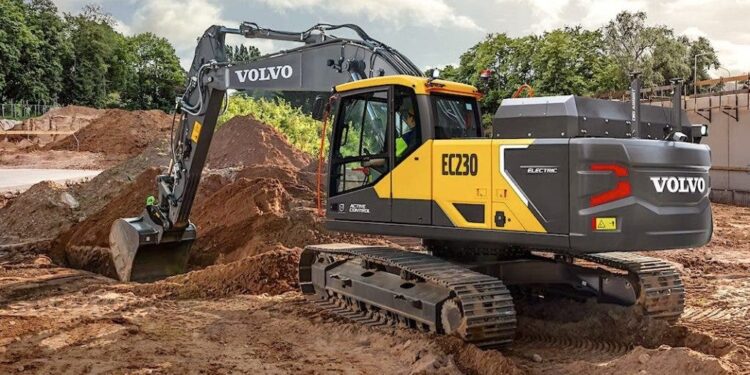Volvo CE has announced a major investment into its excavator plant in Changwon, South Korea, to build commercial-grade battery packs for its upcoming EC230 electric excavator. The 1.1 million square meter facility is the largest excavator production site in Volvo CE’s global portfolio, and produces around 55% of its total excavator volume.
The new battery line will be constructed inside the current Changwon component workshop, occupying about 2,500 square meters. Construction is set to begin this April, with the first commercial battery pack expected to be completed by June. This investment is an important milestone in Volvo CE’s shift to a sustainable future, and will help reduce energy running costs by up to 70% compared to the EC220.
The new electric excavator promises to revolutionize life on a job site with less noise, more reliable operation, and drastically reduced diesel emissions. It is equipped with four 66-kilowatt lithium-ion battery packs that enable the operator to work four to five hours in general purpose applications. With a high-power fast charge on a lunch hour, the machine should last through a full eight-hour shift.
Volvo CE’s investment into its Changwon plant is a major step towards a more sustainable future. The new battery packs will help reduce energy running costs and emissions, while providing a reliable and efficient excavator for job sites. With construction set to begin this April, the first commercial battery pack is expected to be completed by June.
FAQ
Q1. How electric car batteries work?
A1. Electric car batteries are typically lithium-ion batteries that store energy and power the motor. They are recharged by plugging the car into an electric outlet or charging station.
Q2. What electric car has the longest range?
A2. The Tesla Model S has the longest range of any electric car currently on the market, with a range of up to 370 miles on a single charge.
Q3. How electric car batteries are recycled?
A3. Electric car batteries are recycled by breaking them down into their component parts and then separating out the metals, plastics, and other materials for reuse. The metals are melted down and reused in new products, while the plastics and other materials are recycled into new products.





